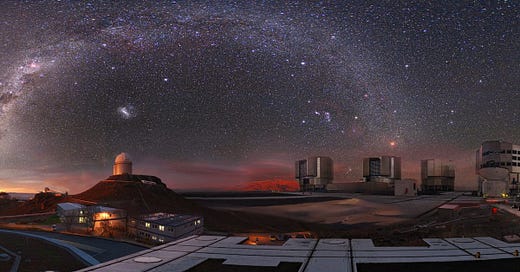JWST Spots a Distant Spiral Galaxy Eerily Like Our Milky Way
Today’s stories include 'I Haven't Ruled Out Anything,' U.S. General Doesn't Eliminate Aliens As UFOs Mount to
'I Haven't Ruled Out Anything.' U.S. General Doesn't Eliminate Aliens As UFOs Mount—Pentagon does not know what these unidentified ‘objects’ are nor how they stay airborne--The US shot down an airborne octagonal object over Lake Huron with a missile on Sunday, reports The Telegraph. "US General VanHerck said the military was unable to immediately determine the means by which any of the three latest objects were kept aloft or where they were coming from. "We're calling them objects, not balloons, for a reason," said VanHerck.
Mysterious Dark Galaxy Emits No Visible Light, Scientists Say-- One newly discovered dwarf galaxy located a mere 94 million light-years away is defying expectations, reports Science Alert. It's named FAST J0139+4328, and it's not emitting any optical light. In fact, it's barely emitting any light at all.
Webb Telescope Spots a Distant Spiral Galaxy Eerily Like Our Own, reports Dennis Overbye for The New York Times. LEDA 2046648 has an eerie resemblance to our Milky Way galaxy, but it lies a billion light-years away.
EHT Peers Into The Heart of One of The Brightest Lights in The Universe, reports Michelle Starr for ScienceAlert."The Event Horizon Telescope (EHT), a telescope array comprising radio antennae around the world, studied a distant quasar named NRAO 530, whose light has traveled for 7.5 billion years to reach us."
Astronomers Uncover Mass Migration of Stars into Andromeda, reports Universe Today. For the first time, astronomers have found evidence of an ancient mass migration of stars into another galaxy. They spotted over 7,000 stars in Andromeda (M31), our nearest neighbor, that merged into the galaxy about two billion years ago.




